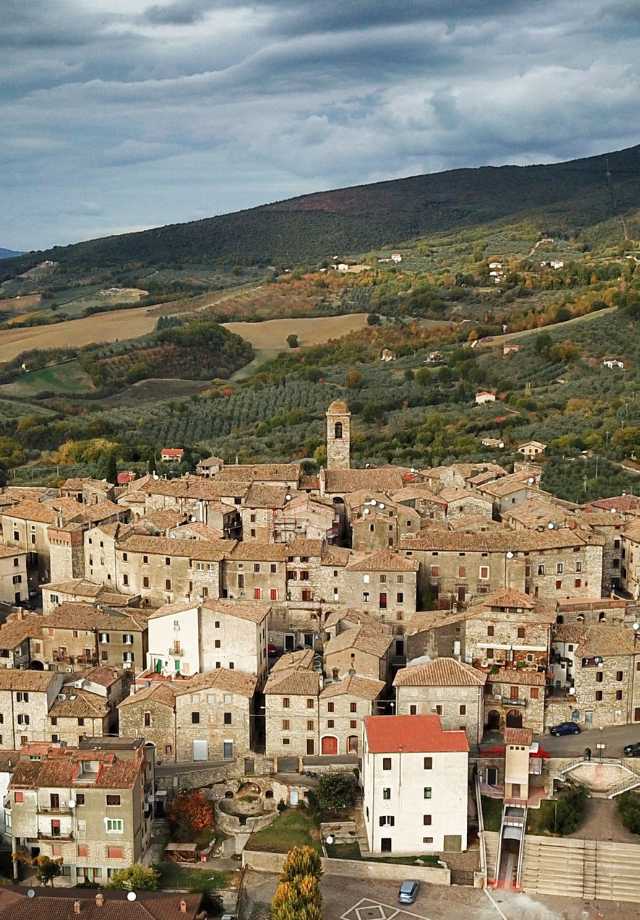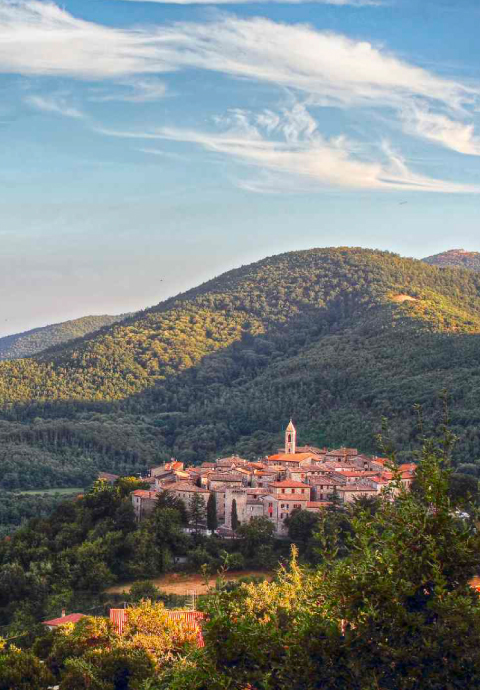The territory is extremely rich in history, nature and beauty: it is history what remains of the pre-Roman settlement of Copio and, above all, its immense Umbro-Etruscan Necropolis in the Vallone di San Lorenzo, it is history and beauty Tenaglie, where dominates the ancient and majestic Palazzo Ancajani in front of the remains of the Castle of Carnano, is history and nature the beautiful Melezzole, a splendid hamlet guarded in the green of wonderful chestnut groves from which the people of Melezzole draw a very tasty and sought-after fruit.
The history of a very ancient borderland
The center is built on the mount (=monticulus) and it has so much history to tell, certainly the history of the Copium trading outpost located on the left side of the Tiber active from the 7th-6th centuries B.C. to the 1st-2nd centuries A.D. is all the more ancient.
Recent studies have revealed its function as a connecting place between Umbrians and Etruscans in an area of influence of ancient Velzna (Orvieto).
The Vallone di San Lorenzo Necropolis, dating from the 6th-4th centuries-with its more than 3,000 burials and grave goods housed at the AMAT Museum in Tenaglie – reinforced the narrative of two peoples who lived these in harmony and divided only geographically by the Tiber.
The Romans arrived in the 3rd century B.C., and some artifacts found at Copio and other places in the area show that, as with neighboring towns, the lands of Montecchio became coveted for the construction of rustic villas.





